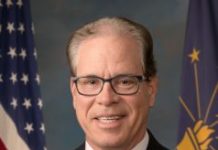By Lesley Weidenbener
TheStatehouseFile.com
INDIANAPOLIS – Republicans are talking big about boosting state funding for public schools over the next two years, but it’s not clear yet whether the cash will be available to make that happen.
Already, House Speaker Brian Bosma, R-Indianapolis, has said that his caucus wants to provide a larger overall increase for schools than the 2 percent boost they received in Fiscal Year 2014 and the 1 percent increase they’re receiving this year.
Analysis button in JPGHe also wants to shift the way that money is distributed among districts. But he said those changes can be mitigated if there’s more money put into education overall.
Republican Gov. Mike Pence also said recently that additional money for education will be key for the 2015 session.
“I believe the coming session of the Indiana General Assembly should be an education session and we should focus on our kids and our teachers and what’s happening in the classrooms of Indiana,†Pence said at the Indiana Legislative Conference.
But he acknowledged that his administration won’t put a dollar amount on its education commitment until state leaders find out how much they have available to spend. That answer – or at least a projection – should come next week when a bipartisan committee forecasts state tax revenue through Fiscal Year 2017.
The numbers will be important because K-12 education funding makes up nearly half of the state’s $15 billion budget. Nearly $6 billion alone goes into what’s called tuition support, which is the money distributed to schools to pay teacher salaries and other basic expenses.
Boosting that funding by 3 percent over two years will cost about $560 million. That’s right. That’s more than half a billion dollars to merely keep up with inflation, let alone provide districts with enough new money to significantly improve programs. It’s also the increase that Democratic Superintendent Glenda Ritz is proposing to give schools for their general funds.
But it’s not clear the state will have enough money even for that kind of increase.
So far this fiscal year – which started July 1 – tax revenue is running about 2.6 percent behind the projections used to write the current budget. That may not sound like much but it totals nearly $148 million with about seven months left in the fiscal year.
Tax receipts are ahead of last year, which means the state is taking in more revenue than it did in Fiscal Year 2014. That’s good news. But because the budget is based on the estimates, the Pence administration must either spend less or take money from the state’s surpluses to make ends meet.
“Revenue hasn’t exactly performed in the last year and a half the way we thought it would,†said State Budget Director Brian Bailey. “And we’ve been able to manage that.â€
Bailey said the new projections – scheduled to be released on Thursday – are “absolutely critical for our discussions†about the next budget.
“So much of what we can do depends on what that forecast says,†Bailey said.
It may be most critical to those budget leaders who are hoping to rewrite the formula that distributes revenue to schools. Republicans plan to close the gap between the schools that receive the highest per-pupil funding – which tend to be urban schools with declining enrollments – and those that receive less per-student, which tend to be suburban, growing districts.
That could cause budget shifts from urban districts to suburban ones. But if there’s a lot more money to go around, the urban schools are less likely to feel a lot of pain. That’s the hope at least, one that’s tied to the revenue projections coming next week.



